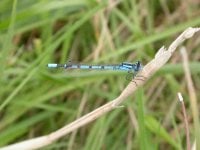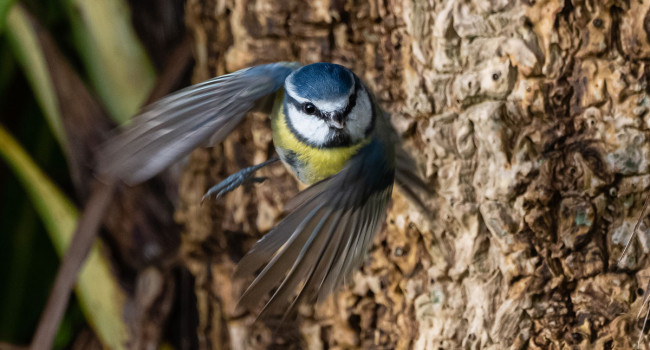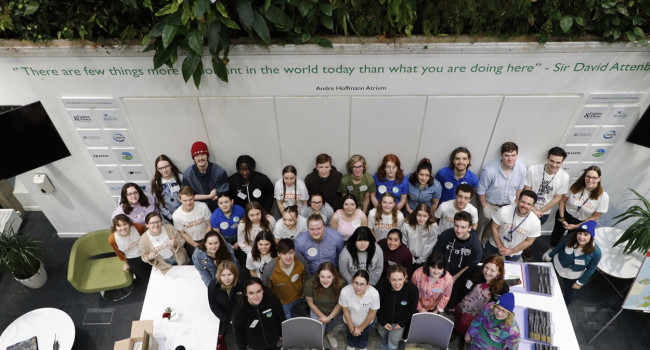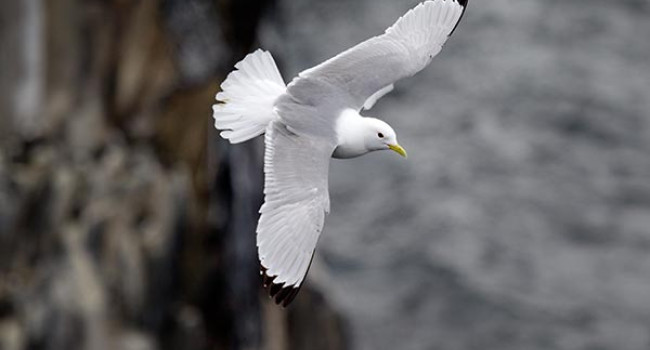Wet summer delays garden dragonflies
01 Sep 2015 | No. 2015-46
Garden dragonflies were slow to emerge this year, according to preliminary British Trust for Ornithology (BTO) Garden BirdWatch results. Reports of common garden dragonflies, such as Large Red Damselfly, peaked much later this year than in previous years, possibly due to the bad weather at the start of the summer. Will this poor summer affect their numbers next year?
Many of our common garden dragonfly species emerge as adults in June and July, spend a few weeks on the wing, lay their eggs and then die. Our most common garden dragonfly is the Large Red Damselfly, which in 2013 was seen in 15% of Garden BirdWatch gardens at its peak in late May. It is one of the earliest emerging dragonflies and usually peaks in May, but this year it only reached a peak of 12% and not until early June, a week later than witnessed in 2014.
The Large Red Damselfly was not the only dragonfly to attain its peak later than in previous years. The Common Blue Damselfly was seen at its highest peak this year, in 10.4% of Garden BirdWatch gardens, but peaked three weeks later than in 2014, in early July. This pattern was also seen in Azure Damselfly, which is usually most common in June.
It wasn’t all bad news, however. Some of our Hawker species, which are rarer in gardens, followed patterns similar to previous years, suggesting that it must have been adverse weather that affected the early emerging species.
Clare Simm, from the Garden BirdWatch team, commented, "It’s been a poor summer for many species, not just dragonflies, as the bad weather hit at a key time of year. As you can see, our volunteers do not just focus on birds, but also provide us with vital information on other wildlife groups too which help us understand how gardens are used by different species."
Will this summer’s results affect how dragonflies do next year? We need your help to find out.
Get in touch for a free BTO Garden BirdWatch information pack which includes a copy of our quarterly magazine. Email gbw [at] bto.org, telephone 01842 750050, or write to GBW, BTO, The Nunnery, Thetford, Norfolk, IP24 2PU. For more information about BTO Garden BirdWatch, visit http://www.bto.org/gbw
Notes for Editors
- The BTO Garden BirdWatch is the only nationwide survey of garden birds to run weekly throughout the year, providing important information on how birds use gardens, and how this use changes over time. Currently, some 13,000 people take part in the project. The project is funded by participants’ contributions and is the largest year-round survey of garden birds in the world. For more information see www.bto.org/gbw
- The BTO is the UK's leading bird research charity. A growing membership and up to 60,000 volunteer birdwatchers contribute to the BTO's surveys, collecting information that underpins conservation action in the UK. The BTO maintains a staff of 100 at its offices in Thetford, Stirling, Bangor (Wales) and Bangor (Northern Ireland), who analyse and publicise the results of surveys and projects. The BTO's work is funded by BTO supporters, government, trusts, industry and conservation organisations. www.bto.org
Contact Details
Clare Simm
(BTO Garden BirdWatch Development Officer)
Office: 01842 750050
(9am to 5.30pm)
Email: clare.simm [at] bto.org
Paul Stancliffe
(BTO Media Manager)
Office: 01842 750050
(9am to 5.30pm)
Mobile: 07585 440910 (anytime)
Email: press [at] bto.org
Images are available for use alongside this News Release.
Please contact images [at] bto.org quoting reference 2015-46
The BTO has an ISDN line available for radio interviews.
Please contact us to book an interview
Office: 01842 750050







Share this page